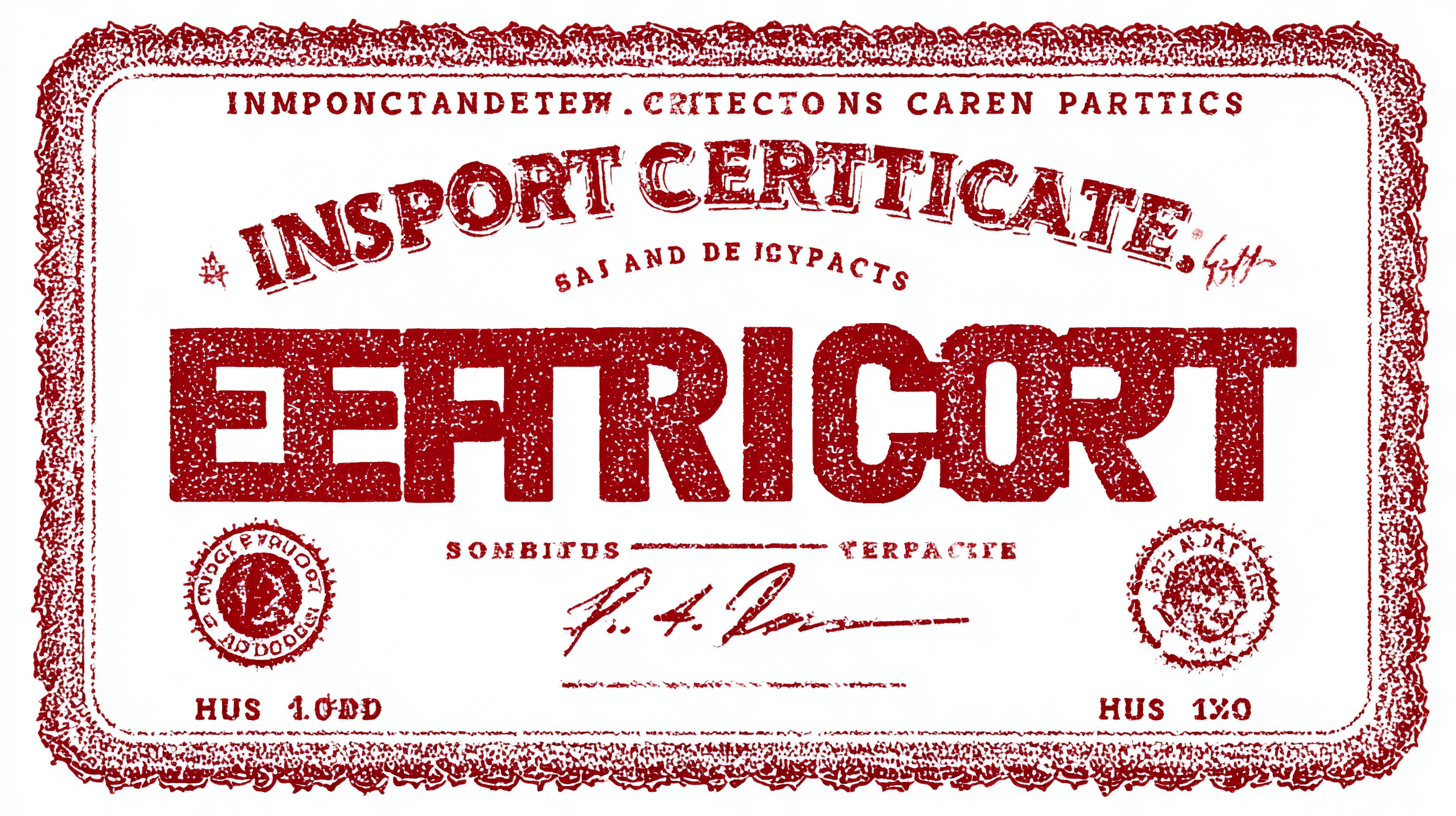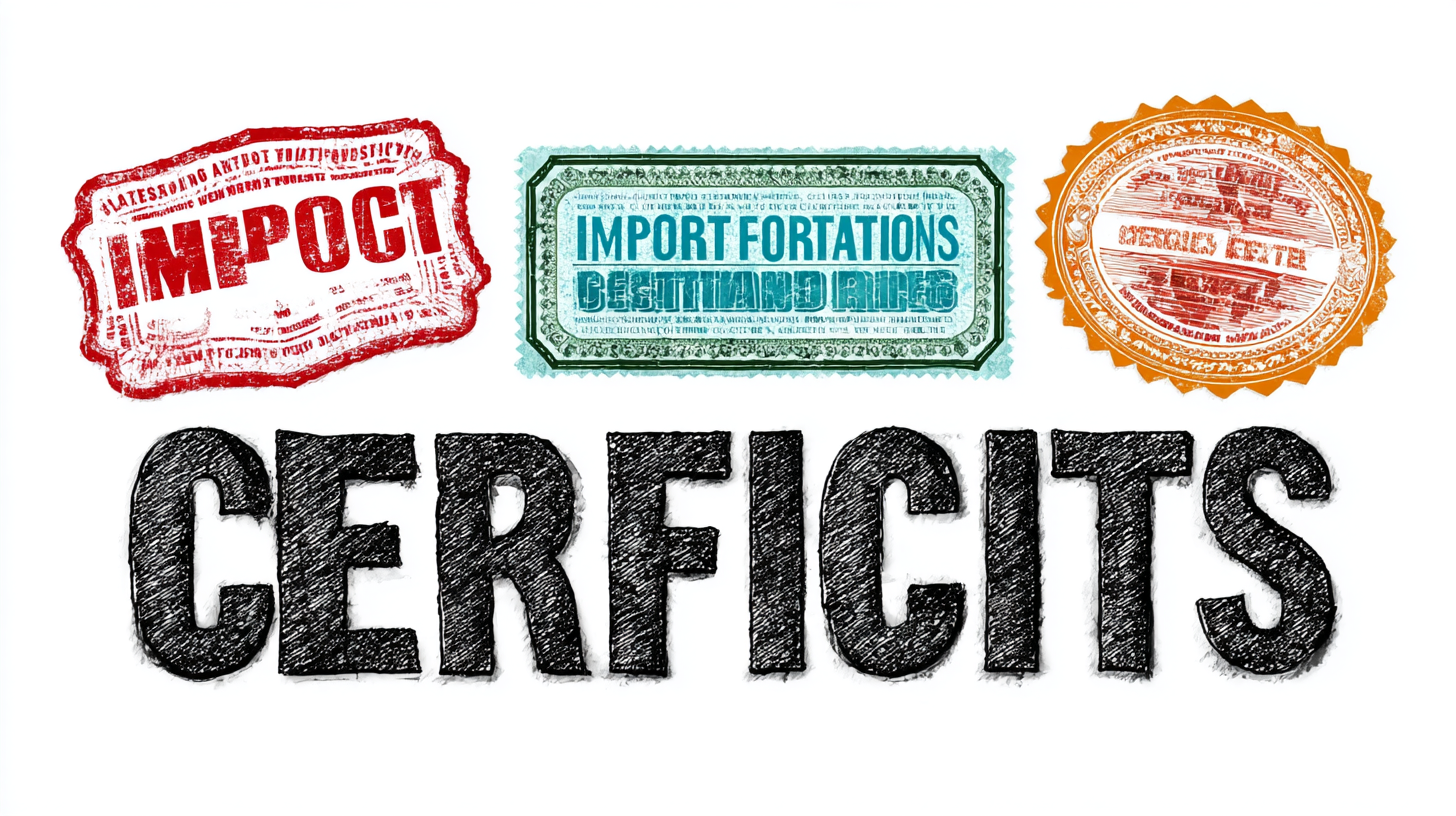
Understanding Import and Export Certifications for the Best Stamping Parts: A Comprehensive Guide
In today's global marketplace, the demand for high-quality stamping parts has surged, driven by industries such as automotive, aerospace, and electronics. According to a recent industry report by Grand View Research, the global stamping parts market is projected to reach USD 200 billion by 2025, growing at a CAGR of 4.7%. With this expansion comes the critical need for import and export certifications to ensure compliance with international standards and regulations. Understanding these certifications is essential for manufacturers aiming to minimize custom delays and enhance product credibility. This comprehensive guide will delve into the various types of certifications required for stamping parts, providing valuable insights for companies seeking to navigate the complexities of international trade while maintaining the highest quality standards.

Understanding the Importance of Import and Export Certifications for Stamping Parts
The importance of import and export certifications for stamping parts cannot be overstated, particularly in today's globalized market. These certifications serve as a testament to the quality and compliance of products, ensuring that they meet specific international standards. Companies that prioritize obtaining the necessary certifications demonstrate their commitment to quality control and customer satisfaction, which ultimately fosters trust among clients. In an era where competitive advantage is crucial, possessing these certifications can differentiate a business from its competitors, making it a valuable asset in the supply chain.

Moreover, compliance with import and export regulations enhances market access, allowing manufacturers to penetrate international markets more efficiently. Without the appropriate certifications, companies may face significant barriers, such as tariffs or restrictions, hindering their ability to expand globally. Additionally, a well-documented certification process can streamline operations, as suppliers and manufacturers are more likely to work together seamlessly when they share a mutual understanding of compliance standards. By recognizing the significance of import and export certifications, businesses can not only safeguard their operations but also position themselves strategically for growth in the competitive landscape of stamping parts manufacturing.
Key Certifications Required for Stamping Parts: An Overview for Global Trade
In the dynamic landscape of global trade, understanding the key certifications required for stamping parts is crucial for manufacturers aiming to maintain compliance and foster international partnerships. A recent report from MarketsandMarkets indicates that the global stamping materials market is projected to reach $35.7 billion by 2025, underscoring the growing demand for high-quality stamped components. To succeed in this competitive environment, manufacturers must ensure that their products meet stringent certification requirements such as ISO 9001, which focuses on quality management systems, and ISO/TS 16949, specifically designed for the automotive sector.
Additionally, compliance with the REACH (Registration, Evaluation, Authorisation and Restriction of Chemicals) regulation plays a pivotal role for companies trading within Europe. This regulation mandates that manufacturers provide thorough documentation regarding the chemical composition of their products, ensuring safety and compliance with environmental standards. According to a report by Grand View Research, the global automotive stamping market is expected to experience a CAGR of 5.7% from 2021 to 2028, highlighting the critical nature of obtaining the right certifications to capitalize on this growth. By prioritizing these key certifications, businesses can enhance their credibility, mitigate risks, and tap into lucrative markets worldwide.
Impact of Certification on Quality Assurance and Market Competitiveness
Understanding the impact of certification on quality assurance and market competitiveness is crucial for manufacturers of stamping parts. Certifications serve not only as a validation of product quality but also enhance the trust between businesses and their customers. They ensure that products meet specific standards, which is essential in gaining a competitive edge in a global market. As the market for testing, inspection, and certification (TIC) is projected to reach USD 352.24 billion by 2034, understanding these certifications becomes increasingly important for businesses looking to thrive.
Tips for achieving relevant certifications include staying updated with the latest industry standards, investing in training for your team, and engaging with certification bodies early in the production process. Additionally, maintaining accurate documentation and records will streamline the certification process, ultimately saving time and reducing costs.
Moreover, digital transformation plays a significant role in enhancing the quality and safety of exports. By utilizing advanced technology, manufacturers can improve compliance monitoring and traceability, critical factors in meeting international standards. Implementing digital tools can also facilitate continuous quality improvement, ensuring that your stamping parts not only meet but exceed customer expectations in terms of quality and safety.
Understanding Import and Export Certifications for the Best Stamping Parts
| Certification Type | Issuing Authority | Duration of Validity | Impact on Quality | Market Competitiveness |
|---|---|---|---|---|
| ISO 9001 | International Organization for Standardization | 3 years | Enhances consistency and improves quality | Increases customer trust and market access |
| CE Marking | European Union | Indefinite (requires compliance checks) | Ensures compliance with health and safety standards | Essential for selling in the EU market |
| RoHS Compliance | European Union | Reviewed every 4 years | Reduces hazardous substance usage | Mandatory for electronic and electrical equipment |
| IATF 16949 | International Automotive Task Force | 3 years | Improves quality in automotive manufacturing | Enhances supplier capabilities in the automotive sector |
| ASTM Compliance | ASTM International | Varies by standard | Enhances material properties and performance | Widely recognized in engineering applications |
Navigating Regulatory Requirements: How to Achieve Compliance in Global Markets
Navigating the complex landscape of regulatory requirements is crucial for businesses involved in the import and export of stamping parts. As global markets expand, understanding the certifications required by different countries becomes essential. This compliance ensures that products meet international standards, enhancing their marketability and reducing the risk of legal issues. Each region may have unique regulations regarding safety, environmental impact, and quality control, so it is vital for exporters to familiarize themselves with these differing standards to avoid costly delays and penalties.
Achieving compliance means investing time in understanding the necessary certifications and documentation specific to stamping parts. Companies must stay informed about changes in regulations and industry standards. Collaborating with local partners and regulatory experts can provide invaluable insights into regional compliance requirements. This strategy not only smooths the path for market entry but also builds trust with consumers who increasingly prioritize quality and accountability in their purchasing decisions. By prioritizing compliance, businesses can not only facilitate smoother transactions but also pave the way for future growth in competitive international markets.

Case Studies: Successful Export Strategies for Chinese Stamping Parts Manufacturers
In the dynamic world of global trade, Chinese stamping parts manufacturers have successfully navigated the complexities of export strategies. By leveraging robust certifications, these manufacturers ensure compliance with international standards, which significantly boosts their credibility in foreign markets. One effective strategy employed by some manufacturers is focusing on specialized segments, offering unique designs that cater to specific industries such as automotive and electronics. Such targeted approaches not only meet client needs but also differentiate them from their competition.
Tips: Establishing strong relationships with international partners is crucial. Chinese manufacturers can benefit from attending global trade fairs and exhibitions to showcase their products, gather market intelligence, and forge connections that translate into lucrative contracts. Additionally, investing in quality assurance and certifications such as ISO can enhance marketability, reassuring potential clients of the reliability and quality of their stamping parts.
Another case study highlights a manufacturer that successfully adapted its products to meet the varying regulatory requirements of different countries. By conducting thorough research into the specific certification needs for markets like Europe and North America, they were able to tailor their offerings while simplifying the compliance process. This proactive approach not only expedited their entry into new markets but also minimized potential legal hurdles.
